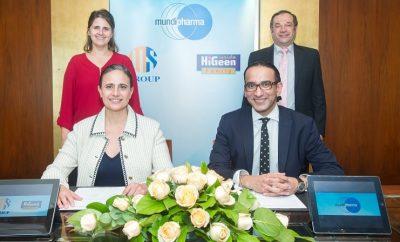Your job is your occupation, work or trade. It is your business. Business is usually taken as a commercial or industrial enterprise which provides goods and services, involving financial, commercial and industrial aspects.
A well-known economic theory teaches that the primary purpose of business is to maximise profit for the shareholders or owners, while maintaining corporate social responsibility. It has also been defined as offering value (through products and/or services) to customers, who pay for the value with cash or equivalents.
A career is something you choose to do for yourself. A career promises status, money, and power. Many people choose professions like Medicine, Pharmacy, Engineering and Law because of the prestige and money that they offer. Admission into Nigerian universities is tough because many candidates want to get into these professional courses for the reasons stated above.
I always remember the advice my uncle gave me when I was to choose a course for university admission. He counselled me not to choose a course because of the prestige or money it offered. I quite agree with this. Indeed, these external considerations should not be the parameters for choosing a career.
A vocation may be loosely defined as a calling, employment, occupation in which you are trained. Vocation implies having a strong desire to spend your life doing a certain kind of work, e.g., religious work. The word “vocation” has the Latin root of vocare which means “to call” and from vox which means “voice”.
The ultimate of whatever you do is your calling. What has God created you to do? In other words, what is God’s purpose for your life? A calling is something you do for God. For some people, the end of their career may even be the beginning of their calling. Your calling may bring you some difficulties and suffering, which may be opportunities used by God to shape you.
Whenever the word “call” is mentioned, the first reaction of many is to think of serving God as apostles, prophets, evangelists, pastors, and teachers, or other services related to church. Let me say that these are primary callings of people of God. Usually, they are described as ministries. However, we must note that the actual meaning of ministry is service. If you are serving, you are ministering. Ministers, whether in church or government, are those who are in the service of others.
Since your calling is something you do for God, you should be asking yourself whether God has approved what you are doing. You may be a pastor, carpenter, teacher, trader, singer, actor, painter, farmer, lawyer, draftsman, medical doctor or taxi driver. What you do is not as important as for whom you do it and the purpose of doing it. After all, we are all unique individuals and have been given different talents according to our abilities to use them. The society cannot function if everyone is an aircraft engineer or medical practitioner. We need artisans and labourers also. The crucial question is, are you serving and pleasing God?
You can choose your profession or career but you cannot choose your calling. Instead, you receive your calling. You discover it because it was there before you were born. In Jeremiah 1:5, God said, “Before I formed thee in the belly I knew thee; and before thou camest forth out of the womb I sanctified thee, and I ordained thee a prophet unto the nations.”
Do you realise that this statement equally applies to you, if you believe? To discover your calling, listen very carefully to what God’s still small voice is telling you. You must bear in mind that you are like clay in the hands of a potter. The potter wants to mould you to become a useful vessel. If you don’t surrender your life to God and allow Him to mould you, you may be pursuing something you are neither called nor equipped to do.
Trying to do what God has not called you to do causes anxiety and stress. Generally, when God calls you into a service, He equips you and provides what you need to succeed in the assignment. Philippians 2:13 says, “For God is working in you, giving you the desire and the power to do what pleases him” (NLT).
A good percentage of the labour force is engaged in the wrong jobs, where their talents and gifts are not being fully or properly used. Such people end up frustrated and miserable. I totally agree with Mike Murdock who said, “If you have chosen the right kind of work for your personality and calling, it will be the source of great delight for your entire lifetime.”
In the right type of work, which is your calling, God can make you extraordinary. I am always excited when I read Exodus 35:30-35. When the Tabernacle was being built, God anointed two artisans – Bezalel and Aholiab – to carry out special craftsmanship. He filled them with His Spirit, in wisdom and understanding, in knowledge and all manner of workmanship, to design artistic works in gold, silver and bronze. These men excelled because they were called and equipped by God. This can be your portion in whatever you do for God, if you believe.

































